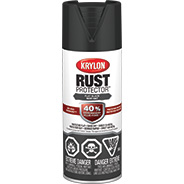Rust is inevitable, but that doesn’t mean you can’t slow it down. Let’s go over what it means to rustproof your car, how often it should get done, and how to do it yourself in your own garage.
How Often Should You Rustproof Your Car?

What Is Rustproofing?
As the name suggests, rustproofing is the process of protecting your car from rust buildup using a combination of chemicals. These form a protective barrier to slow down rust. They target specific areas of your vehicle where rust is most common, including the fenders, tailgate, and upper body panels.
The term “rustproofing” is sometimes used interchangeably with “undercoating,” but they’re different processes. Undercoating is spraying the underside of your vehicle with a wax or rubber-based composite to protect it from rust, damage, and grime from the road (e.g., dirt, salt, ice, debris).
You can combine rustproofing with undercoating for stronger rust protection.
How often should you rustproof?
Rustproof your car at least once every two years. Depending on the climate and your driving habits, you may need to rustproof your car annually. If you want to undercoat your vehicle, it’s best to do it every one to three years.
The best time to rustproof is in the spring or summer, when the weather is warm and dry. Winter is especially harsh on your vehicle, so make sure you rustproof before then.
DIY rustproofing
Gather the following items before you rustproof:
Step 1: Washing your vehicle
Start by giving your car a good wash. Pay close attention to hard-to-reach areas like wheel wells. Check out this article on picking the best car wash soap.
Step 2: Remove existing rust
Before you can protect your car, you need to clean off any existing rust. Most types of rust can be removed, but you may need to try out different methods.
For surface rust, use sandpaper. You may chip away some paint, so if you apply fresh paint afterwards, let it fully dry and cure before continuing.
Scale rust is much more serious, as it can weaken the body of your car. To remove it, you’ll need a bit more elbow grease and a wire brush. If this doesn’t work, you may need to replace the damaged part.
Step 3: Apply rust protector
Now that you’ve got a clean surface to work with, it’s time to apply the rust protector.
Rust protector may stain surfaces, including concrete and asphalt, so put down tarps before you start. Cover areas of the vehicle that you don’t want to spray (e.g., exhaust pipe, brakes, drive belts) with plastic and/or tape. If you want to apply an undercoat, you’ll need a jack and jack stands to access the underside of your car.
Read the rust protector instructions closely and ensure you fully understand them. When you’re ready, apply it all over the exterior of the vehicle using smooth, even strokes. Apply two coats for thorough protection. Depending on the product, it can take a few minutes or several hours to fully dry.
If you’d rather have your vehicle rustproofed and/or undercoated by an expert, take it to a NAPA AUTOPRO Service Centre.
More tips for preventing rust
There are other steps you can take to prevent rust:
- Wash your vehicle every two weeks.
- Wax your vehicle at least twice a year.
- Repair stone chips as soon as possible.
- Store your car during winter if you don’t plan to drive it.
- Keep the interior clean (uncleaned spills can seep into the metal).
For more DIY guides and maintenance tips, check out our blog.








